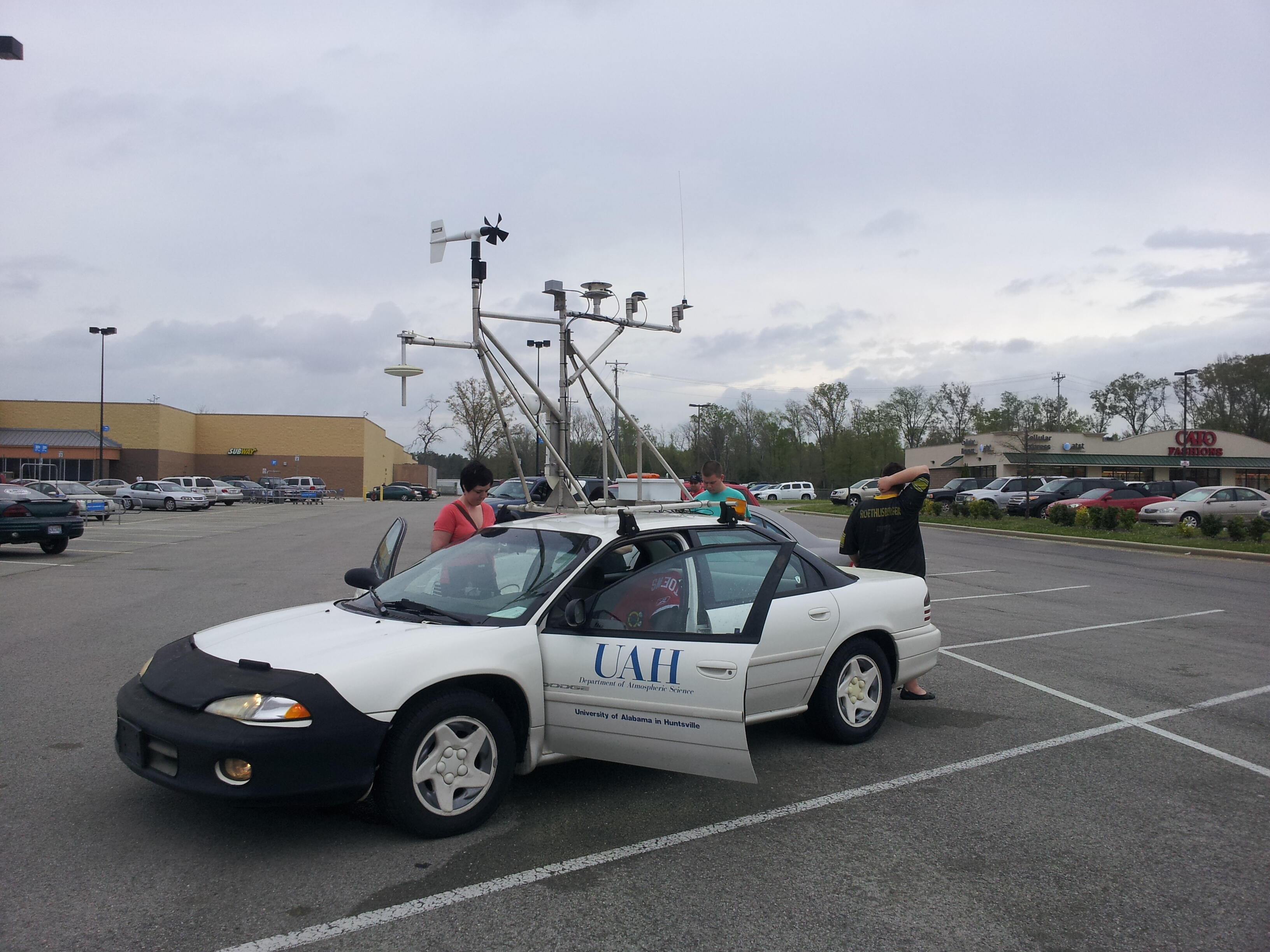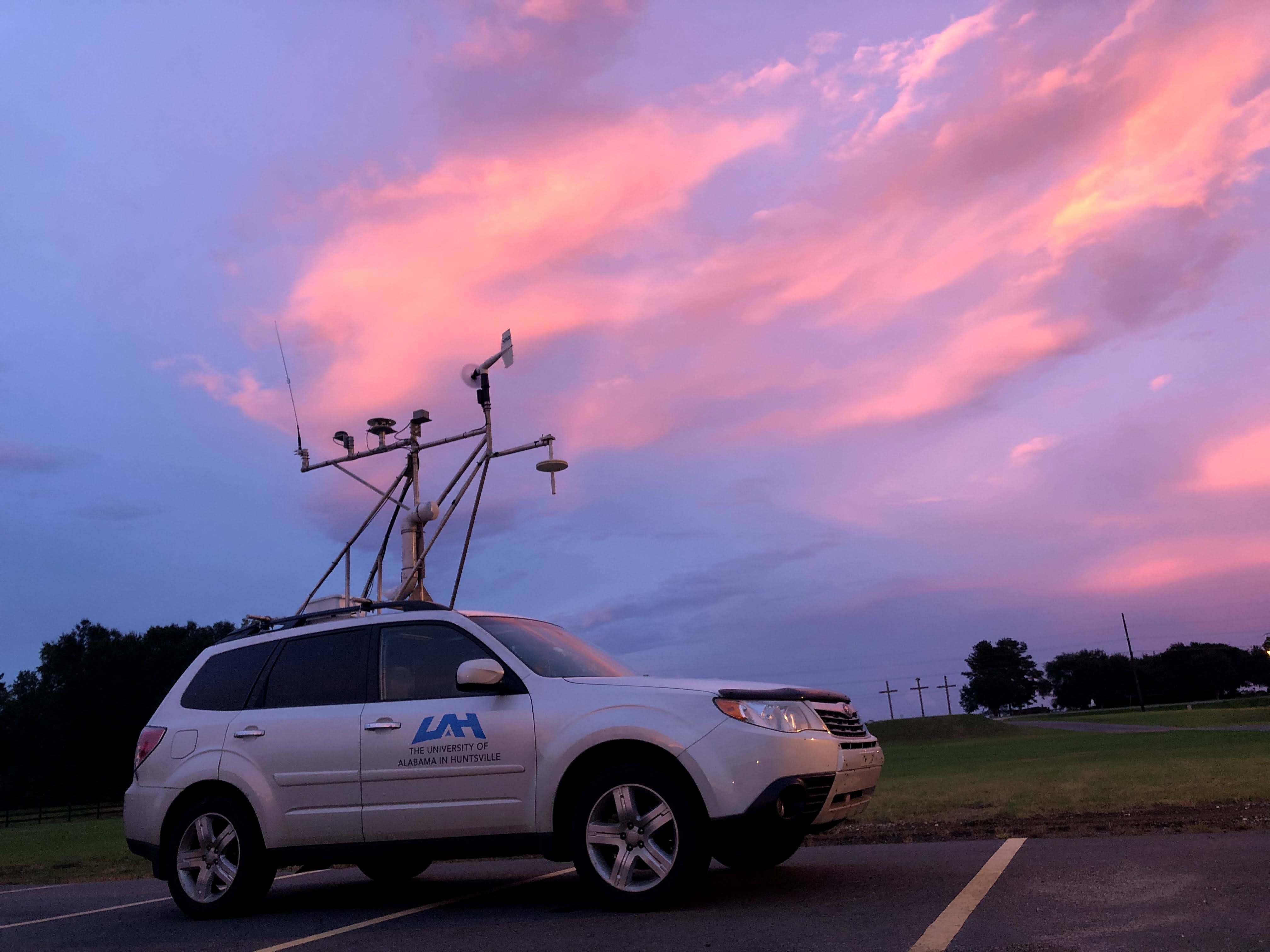|
It has been well documented through various studies that tornadic storms are influenced by, and can modify, the environment that is directly surrounding the storm. One popular way to study this near-storm environment is to gather surface data (temperature, relative humidity, pressure, wind data, etc.) in these regions. Mobile meteorological mesonet vehicles (M3V) with surface instruments mounted to the roof of these vehicles can be used to drive in close proximity of the near-storm environment. To gather surface measurements and near-storm environmental characteristics along Quasi-Linear Covective Systems (QLCS’s) and severe environments, SWIRLL added M3V to the fleet in 2003. In the earlier years, UAH utilized a Dodge Intrepid as M3V. The M3V was upgraded to a 2009 Subaru Forester in 2017. M3V has been a part of several field campaigns (ABIDE, VORTEX-SE, BAMEX) and land-falling tropical cyclones. M3V is typically operated by 2-4 personnel (1 driver, 1 radar analyst/navigator, 1 documenter, and a spotter) and can be deployed in under 5 minutes. 
M3V collecting data during a boundary layer experiment. |




M3V participating in weather outreach at a local elementary school. 
Students conducting boundary layer studies with M3V in support of VORTEX-SE. 
Data from M3V as a tornadic storm passes to the North of the M3V location on 12 April 2020. |

